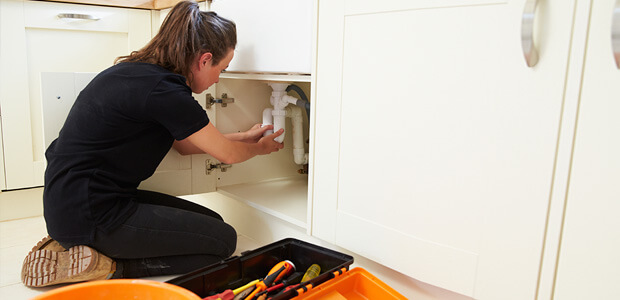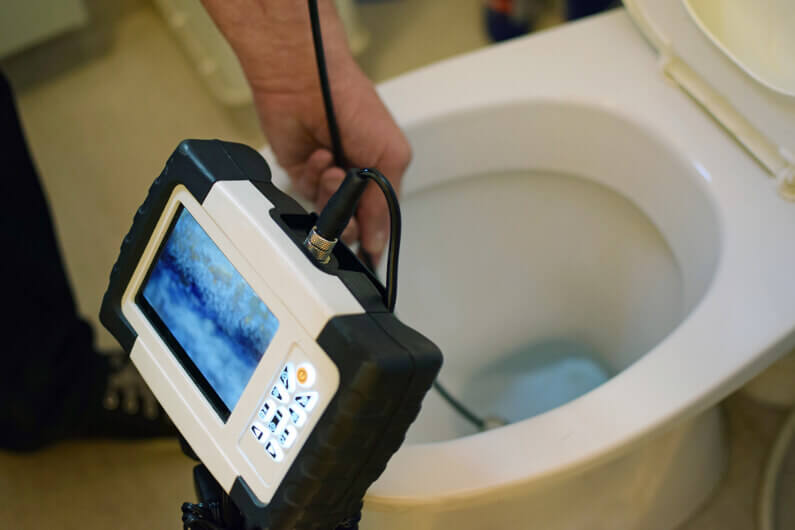Tips for Handling a Blocked Drain Before Contacting Experts
Tips for Handling a Blocked Drain Before Contacting Experts
Blog Article
Have you been on the lookout for critical information involving 8 Tips For Clearing A Blocked Drain?

Intro
Handling a blocked drain can be an irritating experience, disrupting day-to-day activities and possibly triggering damage to your home. Nonetheless, prior to reaching out to pipes professionals, there are actions you can take to attend to the problem on your own. In this guide, we'll discover DIY options and safety nets to tackle an obstructed drainpipe efficiently.
Identifying the Issue
The first step in attending to a blocked drain is acknowledging the indications. Slow-moving drain, gurgling audios, foul odors originating from drains, or water backing up prevail indications of a blocked drainpipe. Recognizing these indicators early can help avoid even more complications.
Common Reasons For Obstructed Drains
Recognizing the variables that add to drain pipes obstructions is essential for reliable resolution. Usual culprits consist of hair, soap scum, grease, food debris, and international things like hygienic products or paper towels. Tree roots getting into underground pipelines can additionally create significant blockages.
DIY Solutions
For minor blockages, several DIY options can be effective. Putting boiling thin down the drain can aid dissolve grease and debris. Baking soda and vinegar or a combination of salt and cooking soda can serve as natural cleansers. Making use of a plunger or pipes serpent to dislodge obstructions is an additional alternative.
Tools and Devices
Having the right devices accessible can make DIY drainpipe cleansing much more reliable. A bettor is a versatile device for removing blockages in sinks, toilets, and showers. A plumbing snake or auger can reach deeper blockages, while drainpipe cleansing chemicals can be utilized carefully for stubborn obstructions.
Preventive Measures
To prevent future obstructions, embracing preventive measures is essential. Set up drain guards or strainers to capture hair and particles before they get in the pipelines. Routinely flush drains with hot water to dissolve oil accumulation, and avoid getting rid of grease or strong waste away.
When to Call an Expert
While DIY solutions can resolve small obstructions, specific indications suggest the requirement for expert help. Persistent blockages, foul odors despite cleansing initiatives, or multiple drains pipes supporting concurrently are warnings that call for experienced intervention.
Choosing the Right Plumbing Service
When selecting a pipes solution, take into consideration aspects such as experience, licensing, and customer reviews. Choose a trusted plumbing technician with a performance history of top quality handiwork and clear rates practices.
Price Factors to consider
The expense of expert drainpipe cleaning company can vary depending on the extent of the obstruction and the plumbing technician's rates. Request quotes from numerous suppliers and inquire about any service charges to ensure openness and prevent shocks.
Safety Precautions
When attempting do it yourself drainpipe cleaning, focus on security. Wear safety handwear covers and eyeglasses to stay clear of contact with harmful chemicals or bacteria. Never mix various drainpipe cleaning products, as this can generate harmful fumes.
Case Researches
Real-life examples highlight the efficiency of DIY options and the importance of prompt specialist treatment in dealing with drain obstructions.
Final thought
By following the tips outlined in this guide, you can effectively deal with blocked drains pipes and stop future plumbing issues. Whether opting for do it yourself remedies or seeking specialist assistance, timely activity is key to preserving a healthy and balanced plumbing system and maintaining the stability of your home.
How to Clear a Clogged Drain Yourself (And When to Call In the Professionals)
What Can Clog a Drain
Dirt Skin flakes Hair Grease Soap scum Food Offset pipes Tree roots Small objects Mineral buildup DIY Tricks to Unclog a Drain
You can fix this! Once you have identified the source of the clog (or have a vague idea), you can try one or a combination of these fixes in order to clear your plumbing.
Wire Hanger or Snake
Untangle and clear out hair from a drainpipe with a homemade snake. Use a straightened-out wire hanger with a 90-degree angle hook to locate the clog and drag out any unwanted material.
Remember not to push the clog further down to where the wire hanger cannot reach! If you need to follow up with a plunger, give it a try. Your efforts might be more successful after it’s been wire-snaked.
If you want to get fancy and don’t have a wire hanger to spare, head to the store and pick up a hand-operated drain snake. You can get one for $10-$30. It may save you the hassle, and provide additional length to reach deep into the clogged pipe.
Plunger
A cup plunger has a suction cup attached to a wooden handle. The rubber creates a seal around the drain, and increases the pressure force of the plunger.
Plunge for 30-second increments to loosen the clog. This may need to be repeated over the course of 15-20 minutes. Once plunged, run the water to flush the remaining material out of the drain.
Remember– never use a plunger if you have used a chemical drain cleaner. These chemicals can splash up from the force of the plunger and cause serious injury or burns.
Boiling Water
Hot water can sometimes break up materials into a flushable amount. Dirt, grease, and soap buildup requires heat in order to unstick from surfaces.
Take your kitchen kettle and heat your water to a boil. Once it reaches a rolling boil, pour it directly down the drain into the blockage. Carefully follow with plunging, if necessary.
Don’t worry if this takes more than one try! It can often take multiple kettles and repeated plunging in order to clear a particularly stubborn clog.
Chemical Drain Cleaner
As a last resort, pick up a bottle of chemical drain cleaner. Drain-cleaning chemicals are potent, and not very good for the environment.
You may need to wear protective eyewear in gloves before handling your bottle of chemical drain cleaner. Follow the instructions printed on the bottle, and flush with water as soon as the instructions allow. Do not follow with plunging.
Baking Soda and Vinegar
As a safer alternative to chemical drain cleaner, baking soda and vinegar can create a chemical reaction that clears tough clogs.
Combine one cup of cleaning vinegar with one cup of boiling water, and set aside. Once you have done this, pour half a cup of baking soda down the drain. Give the baking thirty seconds to settle and cover a large portion of the problem drain.
Following the baking soda, pour down your vinegar and hot water solution. Once the vinegar and baking soda combine, the mixture will bubble and fix. Let this reaction fizzle in the drain for about an hour.
After an hour, follow with a kettle’s worth of hot water. The heat and liquid should flush out any remaining material.
When to Call a Plumber
If your DIY attempts haven’t cleared your clog drain, it’s time to call in a professional. It’s not worth losing access to your kitchen sink or high-traffic bathroom. A clog in a vital area can keep you from the things you’d rather be doing, and derail your routine.
Anytime a clog is causing water to spread is a time to call in a plumbing service. What starts out as a little bit of water can quickly grow into serious, expensive water damage.
Additionally, a serious clog can result in burst pipes or serious leaks. Make sure you know when to take it seriously!
https://myguysnow.com/how-to-clear-a-clogged-drain-yourself-and-when-to-call-in-the-professionals/

Hopefully you liked our part on 8 Tips For Clearing A Blocked Drain. Many thanks for taking time to read our article. Sharing is caring. Helping others is fun. Thanks so much for taking the time to read it.
Call Report this page